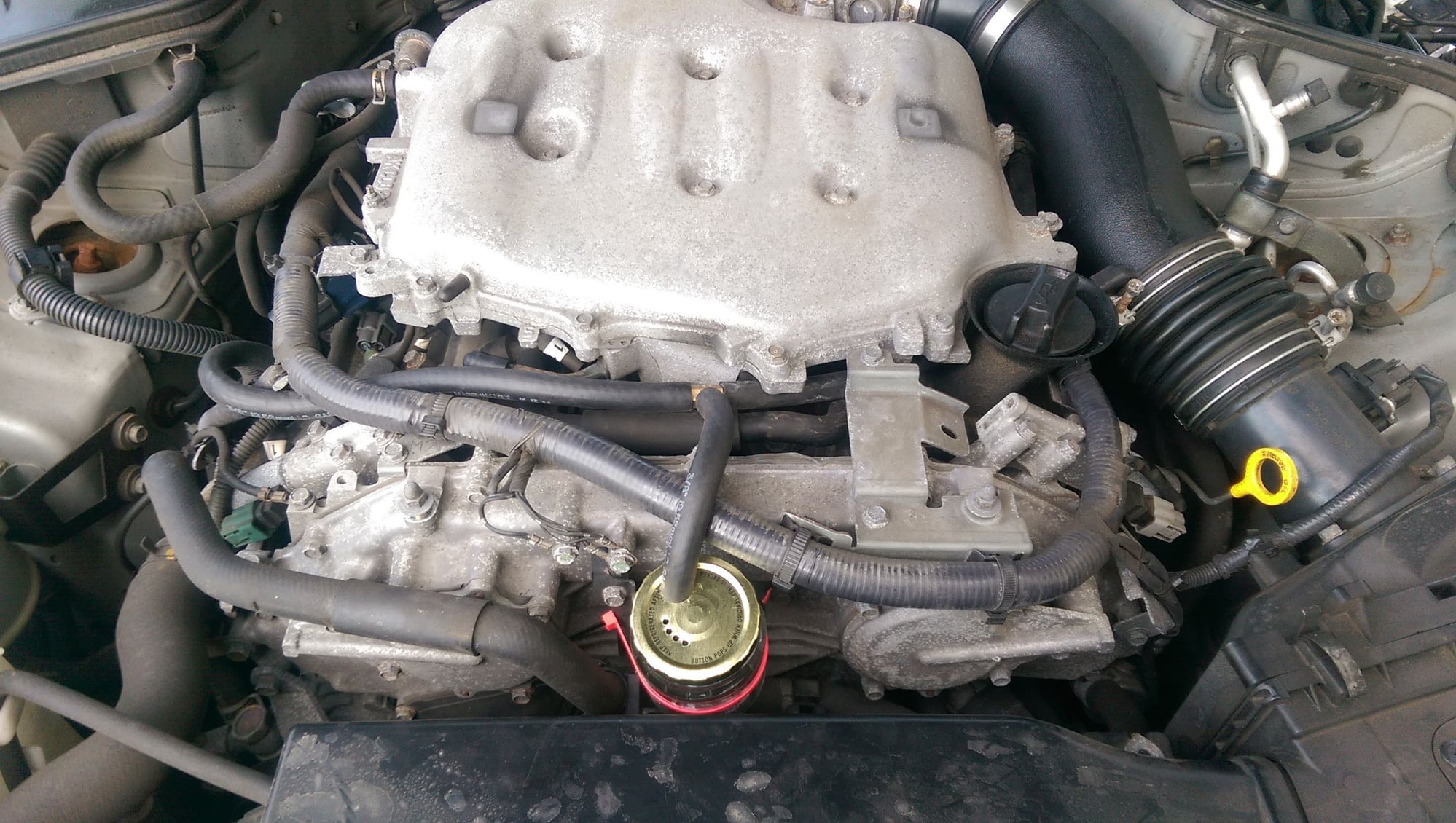

The best thing you can do to contribute to the overall cleanliness of your engine is to keep your EGR valves clean at all times. They will dissolve thinner bits with ease, but they could also cause big chunks of the gunk to break off which might ruin your turbocharger or gunk up your catalytic converter. There are spray-based cleaners that you can use to get some of that carbon build-up out, but note that those cleaners are not nearly as soluble as gasoline. It is just not as critical to the health of your engine as it is to one that is direct-injected.
#Vented catch can g35 install
However, oil catch cans have been around for long enough and many are designed for port-injected engines as well, so you can go ahead and install one - it definitely won’t hurt performance, unlike poorly selected exhaust system upgrades.

To remedy this, you’ll have to either get your intake valves replaced or walnut blasted (because sandblasting will ruin them).

This means the intake valves in port-injected engines remain clean as a result of constantly being sprayed down with gasoline.īecause this is not the case with GDI engines, the chances of them accumulating gunk on the intake valves are much higher. A PCV valve that transfers the blow-by gases from the crankcase to the intake manifold via a hose.A ventilation hose that connects the crankcase to the throttle body, and.This is where the positive crankcase ventilation or PCV system comes into the picture - it’s a pressure release system that removes unwanted gases from the crankcase. If the gases aren’t ventilated out, the pressure will eventually rise to a point where the engine’s seals and gaskets will start giving out and cause low compression. Removal of blow-by gases is extremely important because the crankcase isn’t designed to handle that amount of pressure. The compression and combustion cycles lead to the buildup of pressure, exhaust gases and a mist of unburnt oil and fuel in the engine cylinder.īecause engines are never 100% air-tight, some of this pressure leaks past the piston rings and enters the crankcase along with other unwanted gaseous contaminants. Internal combustion engines are basically large air pumps that rely on the combustion of air and fuel to make power. To understand how oil catch cans work, you need to understand 2 concepts: In this guide, we’ll tell you all there is to know about choosing the best oil catch can for your car, and we’ll conclude with our top recommendations.ĭon’t want to read the guide? Skip straight to our reviews of your best options. Read on if you’re confused about whether or not you should buy an oil catch can, and if yes, which one. On some engines they do nothing, and on others, they prevent potentially expensive repairs and improve performance. Our observations reveal that the usefulness of catch cans heavily depends on what car they’re used in. We’d say do your own testing, speak to technicians, and read informative guides like this one to arrive at a conclusion. It’s just as easy to fall for marketing tactics as it is to blindly believe forum lore and decide what’s right for you. Many enthusiasts swear by the effectiveness of oil catch cans as a preventative maintenance measure and others believe they’re a scammy marketing gimmick designed to sell you “beer cans with 2 attached hoses”. Oil catch cans are a lot like cold air intakes in the sense that there’s a lot of hype surrounding them, and their functionality varies significantly because different cars react differently to them.


 0 kommentar(er)
0 kommentar(er)
